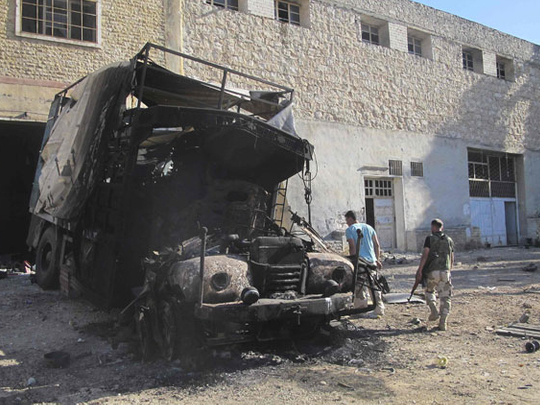
ANKARA/BEIRUT: The United States is considering a no-fly zone in Syria, potentially its first direct intervention into the two-year-old civil war, Western diplomats said on Friday, after the White House said Syria had crossed a “red line” by using nerve gas.
After months of deliberation, US President Barack Obama’s administration said on Thursday it would now arm the rebels, having obtained proof the Syrian government used chemical weapons against fighters trying to overthrow President Bashar Al Assad.
Britain said it agreed with the US assessment on chemical weapons and called for a “strong, determined” international response. Foreign Secretary William Hague said Britain would be discussing that response “urgently” with the US, France and other countries. “We agree with the US assessment that chemical weapons, including sarin, have been used in Syria by the Assad regime,” Hague said. France believe that it was unlikely the UN Security Council would agree to impose a no-fly zone in Syria, “It seems unlikely such a measure will obtain the agreement of the Security Council,” French foreign ministry spokesman Philippe Lalliot told reporters.
The Syrian government dismissed US charges as “full of lies,” accusing Obama of resorting to fabrications to justify his decision to arm Syrian rebels. The commander of the main rebel umbrella group welcomed the US move, saying it would lift his fighters’ morale. Russia said that US data on chemical weapons was “unconvincing”, and warned Washington against repeating the mistake it made when invading Iraq after falsely accusing Saddam Hussain of stocking weapons of mass destruction.
Two senior Western diplomats said Washington is looking into a no-fly zone close to Syria’s southern border with Jordan.
“Washington is considering a no-fly zone to help Al Assad’s opponents,” one diplomat said. He said it would be limited “time-wise and area-wise, possibly near the Jordanian border”, giving no further details.
Imposing a no-fly zone would require the US to destroy Syria’s sophisticated Russian-built air defences, thrusting it into the war with the sort of action Nato used to help topple Muammar Gaddafi in Libya two years ago. Washington says it has not ruled it out, but a decision is not “imminent”.
“We have not made any decision to pursue a military operation such as a no-fly zone. And we have a range of contingency plans that we’ve drawn up,” Deputy National Security Adviser Ben Rhodes said.
“A no-fly zone would carry with it great and open-ended costs for the United States and the international community. It’s far more complex to undertake the type of effort, for instance, in Syria than it was in Libya.”
Meawnhile, the Syrian regime, boosted by thousands of seasoned fighters from Lebanon’s Hezbollah, said its troops are now preparing for a massive assault on Aleppo, Syria’s biggest city, mainly in rebel hands since last year.
Activists reported an intensified assault on parts of Aleppo and its countryside near the Turkish border overnight, sparking some of the most violent clashes in months.












